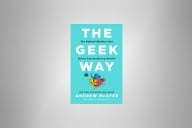You have /5 articles left.
Sign up for a free account or log in.
This conversation is with the authors of the chapter “Digital Education for Access and Equity” in our new co-edited book, Recentering Learning: Complexity, Resilience and Adaptability in Higher Education (JHU Press, 2024). The book (in paper and ebook form) is available for order from JHU Press and on Amazon.
Annie Sadler is the assistant director of project evaluation and research at Stanford Digital Education. Martin Kurzweil is vice president, educational transformation, at Ithaka S+R. Matthew Rascoff is vice provost for digital education at Stanford University.
Q: What main themes of your chapter would you like readers to take away and bring back to their institutions and organizations?
A: Our chapter examines an emerging category of advanced coursework aimed at expanding equitable access to higher education. It presents case studies of three programs (UT Austin’s OnRamps, the National Education Equity Lab and Davidson College’s Davidson Next) that engage faculty from highly selective institutions to offer online or hybrid format courses to students at high schools serving primarily lower-income students. These cases highlight how institutions can leverage their resources and expertise to create academic pathways for historically underserved students that expand their opportunities and contribute to a more equitable higher education landscape.
The high school students who participate in these courses boost their preparation for college-level work, gain exposure to higher education institutions they may not otherwise encounter and demonstrate their intellectual prowess to themselves and others. The colleges and universities offering courses enjoy significant benefits as well. Their admissions offices tap new recruiting pipelines to high school students from underserved backgrounds, and their faculty and student teaching assistants extend the boundaries of their impact.
Q: What are potential opportunities and levers to recenter learning within research-intensive colleges and universities?
A: In each of the cases we describe, learning is the basis of a new kind of collaboration between higher education institutions and high schools. They share a vision of reshaping college preparation and recruitment for underserved students through learning. That vision goes beyond previous models, which offer information about applying for financial aid. Each of the programs we profile creates a learning bridge that connects high school students with college-level expectations and experiences.
In OnRamps, for instance, students engage with college-level content while receiving support at the high school level, closing the gap between college expectations and their prior preparation. The substantial investment in high school teacher training—up to 80 hours for new teachers—underscores the program’s commitment to building a culture that integrates active learning, technological skills, rigor and growth mindset. The OnRamps model extends beyond content delivery to include the cultivation of essential academic knowledge, skills and mindsets.
Similarly, by involving both high school teachers, undergraduate teaching fellows and faculty, the National Education Equity Lab supports high school students’ academic growth while familiarizing them with college-level expectations. This learning-centered approach to college preparation and recruitment in Title I high schools allows underserved students to demonstrate their readiness for college, potentially reducing undermatching and expanding their educational opportunities.
Q: How might the rapid evolution of generative AI impact the work of recentering learning?
A: While our chapter does not directly address generative AI, its potential impact in the context of our case studies could be significant. AI technologies could enhance personalized learning experiences, tailoring course content and pacing to individual student needs in programs like those we described. This personalization could potentially improve outcomes and engagement for students from diverse backgrounds. Additionally, AI-powered tools might help manage larger numbers of students in online or hybrid courses, addressing some of the scalability challenges mentioned in our case studies.
However, it’s crucial to approach AI integration thoughtfully. While AI could assist faculty in developing course materials more efficiently or enhance assessment methodologies, the human element remains vital. The success of programs like OnRamps and the National Education Equity Lab hinges on personal engagement among faculty, teachers, teaching assistants and students. As we consider the role of AI in programs such as these, we must ensure that it enhances rather than replaces crucial human interactions. Moreover, careful consideration is needed to ensure that AI implementation doesn’t exacerbate existing inequities, but rather serves as a tool to further the goal of expanding equitable access to high-quality educational experiences.








